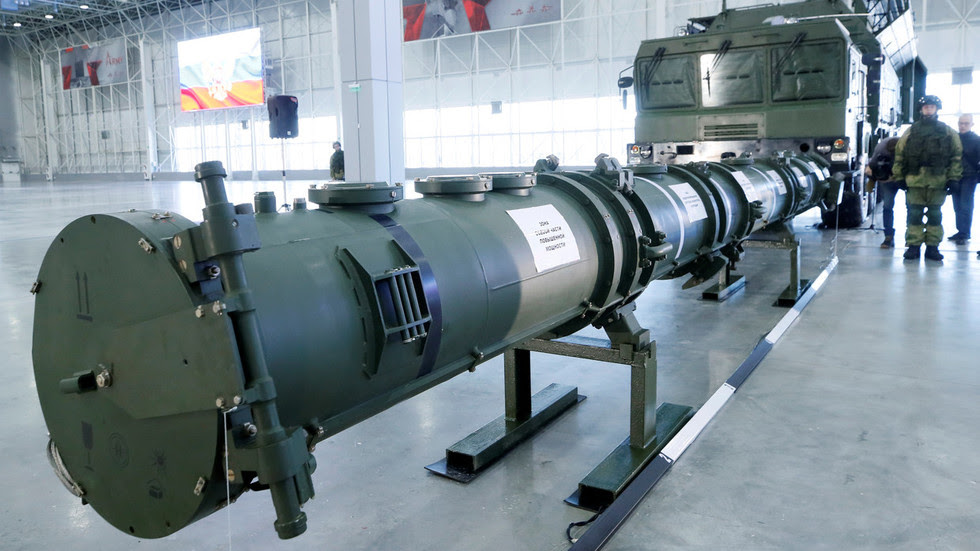Nice try, wrong missile: US botches propaganda video
accusing Russia of INF violation
Published time: 22 Jul, 2019 20:14

SSC-8/9M729 cruise missile system on display at
Patriot Expocentre in Moscow, Russia, January 23, 2019. © REUTERS/Maxim Shemetov
The US mission to NATO sought to blame Russia
for the expiration of an arms control treaty by posting a Twitter cartoon
claiming Moscow had developed a forbidden missile – but didn’t help its own
argument by showing the wrong one.
In a surprisingly poor-quality video, narrated
by a female AI voice, the US accused Russia of developing a missile that was
banned under the 1987 Intermediate-Range Nuclear Forces (INF) Treaty, and said
there was still time for Moscow to “come back into full and verifiable
compliance” before the deal expires on August 2.
Not only is this not true, but the missile
system shown in the cartoon was the perfectly legal and completely different
Iskander-M.
With the deadline of 2 August 2019, #Russia still has a
chance to save the #INFTreaty
by coming back into full & verifiable compliance. The U.S. and @NATO Allies have gone to great lengths to
uphold & support arms control, and should do the same.
While the Iskander is a short-range ballistic
missile, the 9M729 (NATO codename SSC-8) is a short-range cruise missile that
uses a similar platform, but has a completely different and visually
distinctive launcher. All of which the US diplomatic and military officials
could have seen for themselves, had they bothered to attend a public
presentation of the system in January this year.
Russian defense and foreign ministry officials
brief reporters on the SSC-8/9M729 cruise missile system, Moscow, January 23,
2019. © REUTERS/Maxim Shemetov
Russian officials explained that the 9M729 is
not some sort of new super-missile, but an upgrade of the existing 9M728 cruise
missile, with a range of just under 500 kilometers – and therefore compliant
with the treaty.
US claims about the weapon are based on
newspaper reports from 2017, and unprovable intelligence community assessments
based on different cruise missiles – the air-launched Kh-101 and sea-launched
Kalibr, neither of which are banned under the INF Treaty.
The easily avoidable missile mistake in the clip
– produced by video wizards under contract to the US State Department – isn’t
the worst of it, however. The real problem is the claim that preserving the INF
treaty is somehow Russia’s responsibility, with just over a week left on the
clock.
Russian president Vladimir Putin signed the
decision to withdraw from the INF on July 3. Washington, however, initiated its
widrawal in February – and signaled it was determined to do so three months
prior, regardless of what Russia did, because the INF was a relic of the Cold
War.
“There’s a new strategic reality out there,” US National Security Advisor John Bolton
told reporters in Moscow in October 2018, describing the INF as a “bilateral
treaty in a multipolar ballistic missile world,”that applied only to the US
and Russia in Europe and did not do anything to constrain the actions of China,
Iran or North Korea.
Bolton had also brushed off concerns about the
INF, bringing up another unilateral treaty exit on his watch – the 2001
decision to scrap the anti-ballistic missile (ABM) pact – and arguing it did
not unravel “international strategic stability” as the
doomsayers predicted.
Russia, however, has cited the US exit from the
ABM treaty as one of the key reasons – along with NATO’s eastward expansion –
for its military modernization program and in particular the development of new
missile technologies capable of maintaining its nuclear deterrent.
No comments:
Post a Comment
Note: Only a member of this blog may post a comment.